Do your students often have difficulty answering questions after reading text? Question-Answer Relationship (QAR) Strategy to the rescue! QAR has been a lifesaver for my students! When students are explicitly taught Question-Answer Relationship, they learn how to recognize the questions being asked and how to locate the information to help answer the questions.

What is Question-Answer Relationship?
Question-Answer Relationship (QAR) is a strategy that relates questions with the text, using the reader’s background knowledge or direct context clues and information included in the text being read. In QAR, there are four types of questions that need to be asked when reading a text: Right There, Think and Search, Author and Me, and On My Own.
QAR helps students understand the differences between In the Book and In My Head question-answer relationships. In the Book kinds of questions can be answered, you guessed it, in the book. The answer can be found directly in the text. In My Head kinds of questions must be answered using Higher Order Thinking skills, going beyond what was in the text. Students must bring in their own thinking, schema, and connections.
Why Use the Question–Answer Relationship Strategy?
- It can improve students’ reading comprehension.
- QAR teaches students how to ask questions about their reading and where to find the answers to them.
- It helps students read beyond the text.
- Students are inspired to think creatively.
- It allows students to use higher level thinking skills.
When should I use Question-Answer Relationship?
We use it all the time! My First Graders love it! Yes, you heard me! Even First Graders can use it! The strategies have made a big difference in how my students think about questions and find the answers in challenging texts. And the best part: you can use this strategy across all subjects: social studies, science, guided reading, shared reading…. The possibilities are endless!
How to Use Question-Answer Relationship
1. Explain to students that there are four types of questions:
In the Book:
- Right There (the answer is clearly stated in the text)
- Think and Search (the answer is in the text, by the reader must incorporate several pieces of information)
In My Head:
- On My Own (the answer can be found by using the reader’s background knowledge)
- Author and Me (the answer is inferred in the text and the reader must use a combination of information in the text and their own knowledge)
2. Read a short passage aloud to your students.
I always begin with text that students can read and comprehend easily. In doing this, I ensure that my students are successful in understanding the process of answering questions. First, students are required to figure out what the question is asking. Then they are asked to find the answer to the question within the text. Students categorize the question-answer relationship.
After you have modeled this SEVERAL times, guide the students through the process gradually releasing the responsibility of learning to them. Provide as many opportunities as possible for kids to try the strategy on their own.
3. Have predetermined questions you will ask after you stop reading. After reading, read the questions aloud to students and model how you decide which type of question you have been asked to answer.
In the beginning, it is so important to MODEL, MODEL, MODEL! First, read the text; next, ask questions; third, find the answers; and fourth, categorize the question-answer relationship. As we read questions, I often ask students to label the question. “Is this a Right There Question?” or “Is this a Think and Search?” This helps students recognize whether or not information is in the text and, if not, that it is necessary to make inferences to answer the question.
4. Show students how find information to answer the question (i.e., in the text, from your own experiences, etc.).
After you have modeled this SEVERAL times guide the students through the process gradually releasing the responsibility of learning to them. Once students demonstrate that they can answer questions, I provide many opportunities for my kids to try the strategy on their own.
Question-Answer Relationship Activities
I have created some materials to help students learn the Question-Answer Relationship strategy:
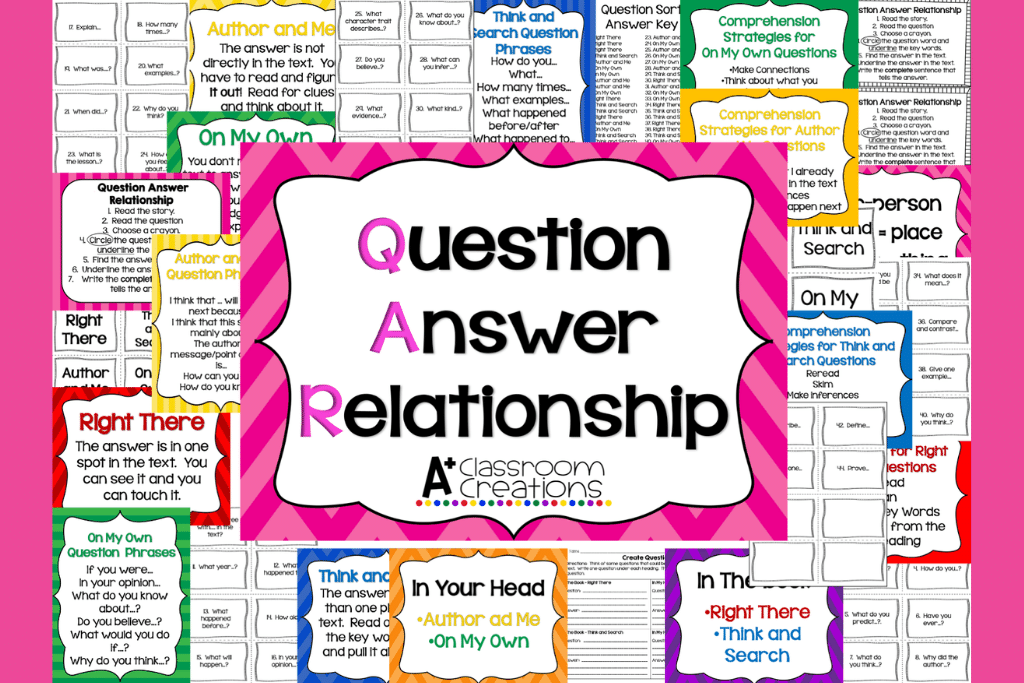

Definition of each type of question
Comprehension strategies that can be used
Sample question stems for each strategy
Steps to find answers in the text
Print and laminate the anchor charts for your students to use as a reference.




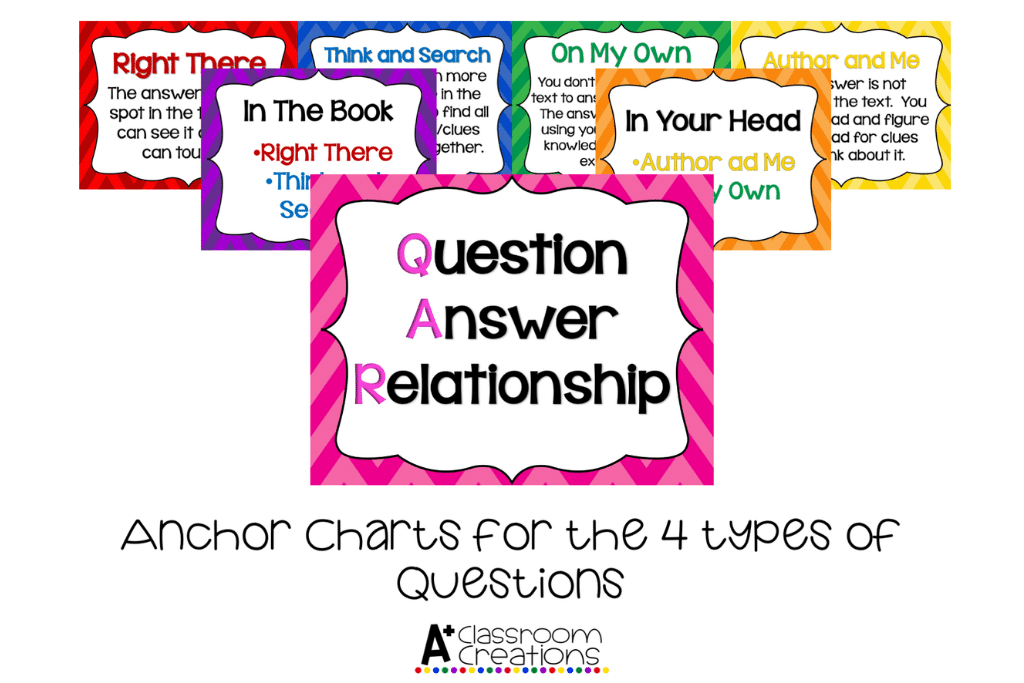
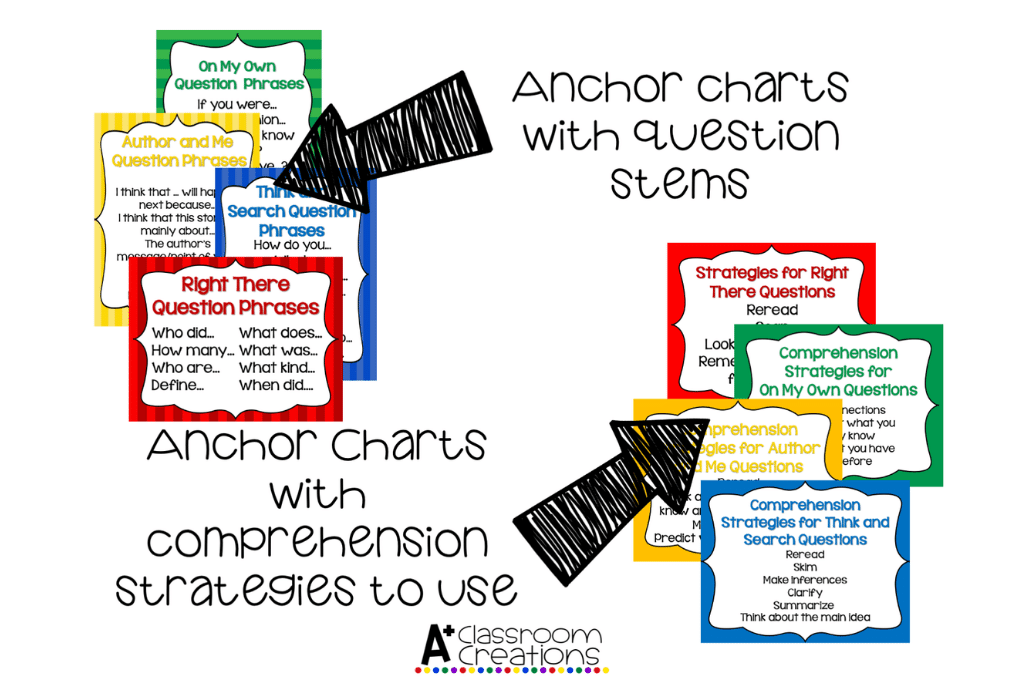
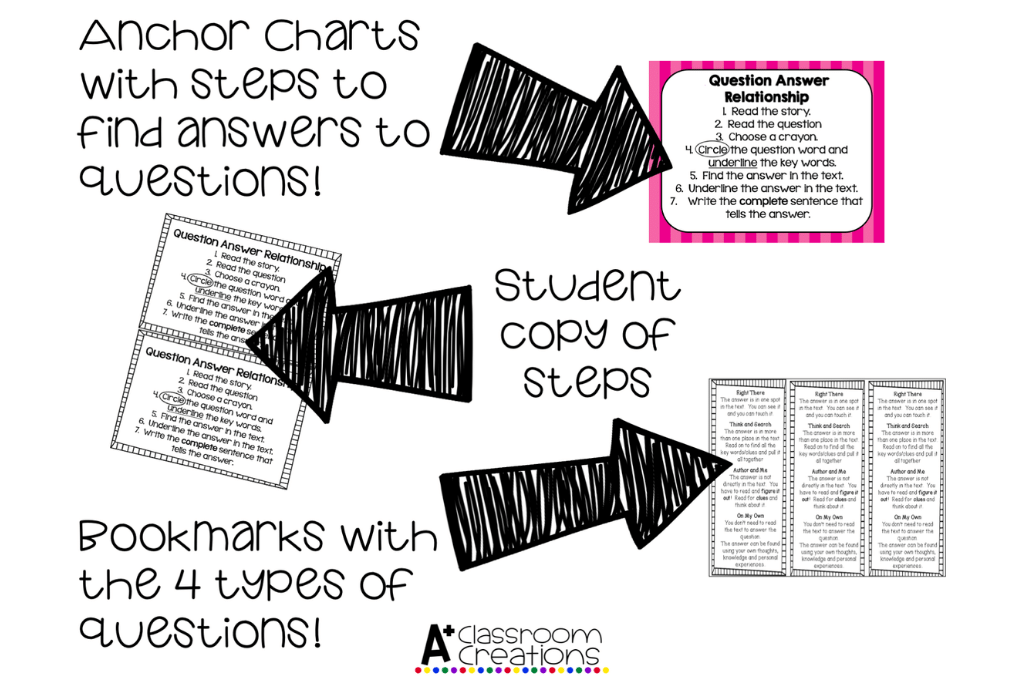
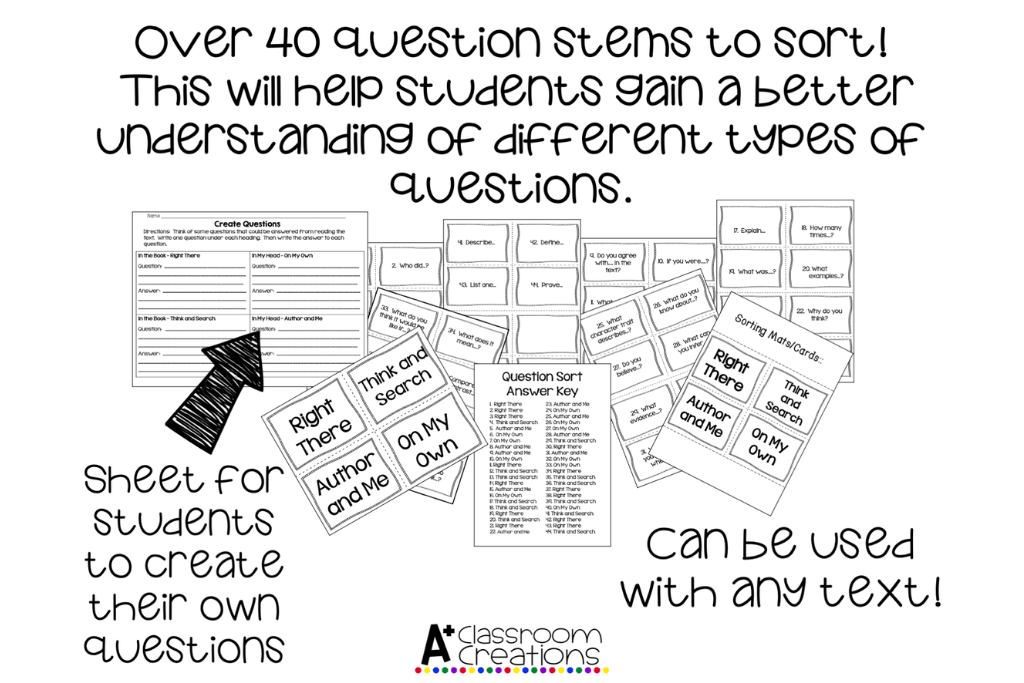
If you want your own set of Question-Answer Relationship worksheets and anchor charts, you can get them HERE!
Have you used the QAR strategy in your classroom? Please share any tips or tricks that you have about QAR!
For more reading activities for the classroom CLICK HERE!




